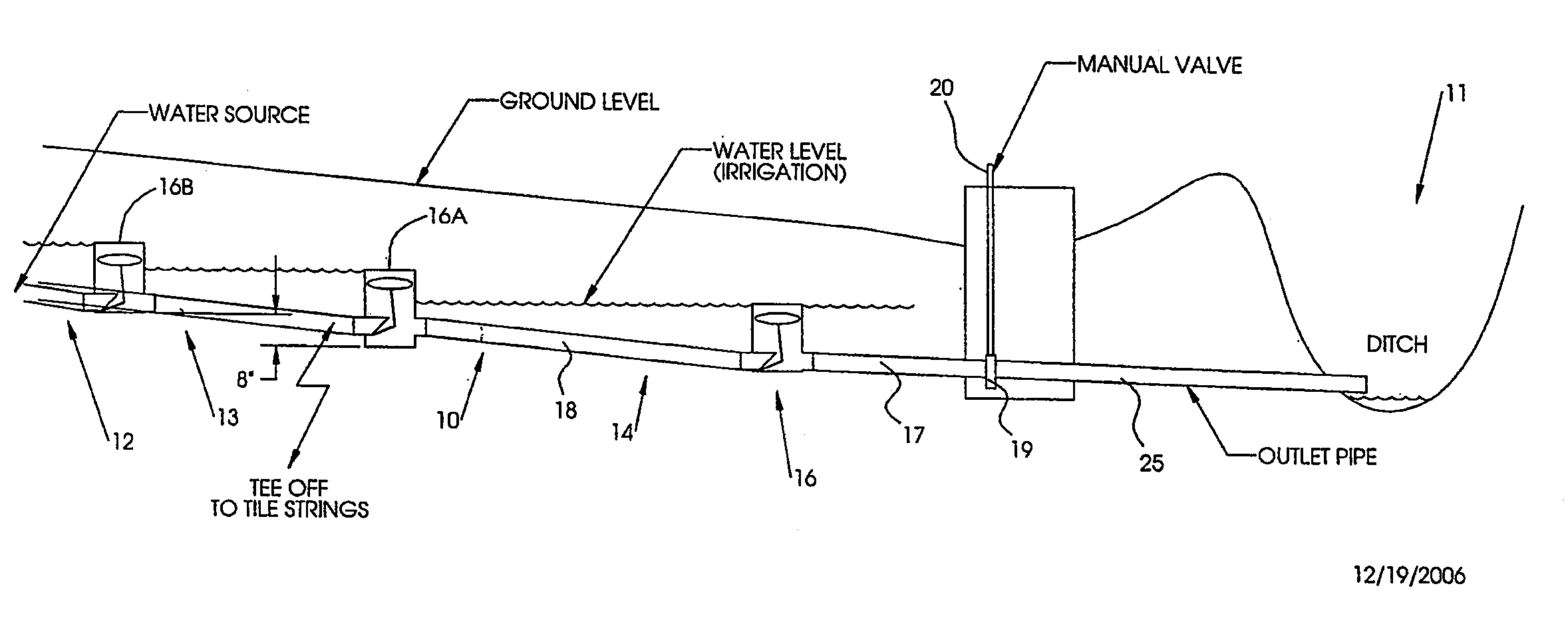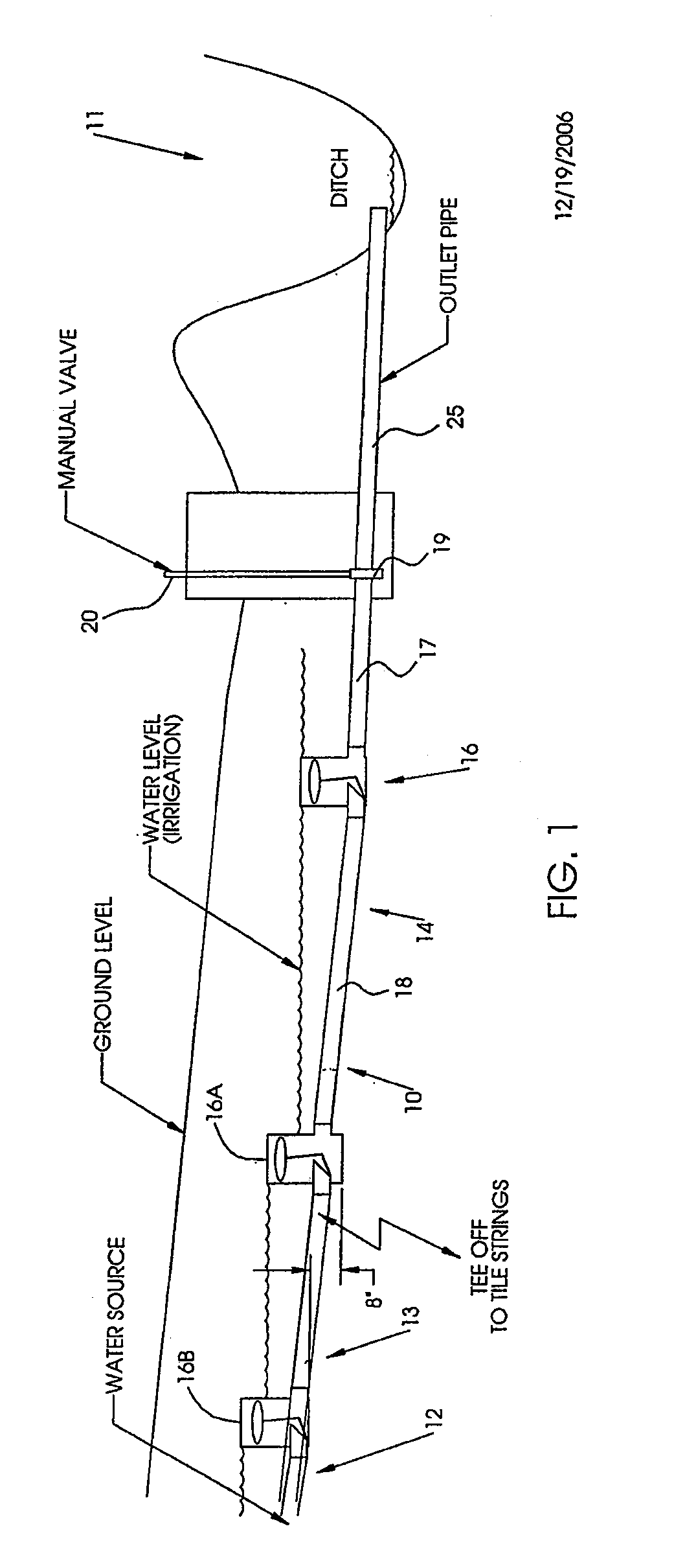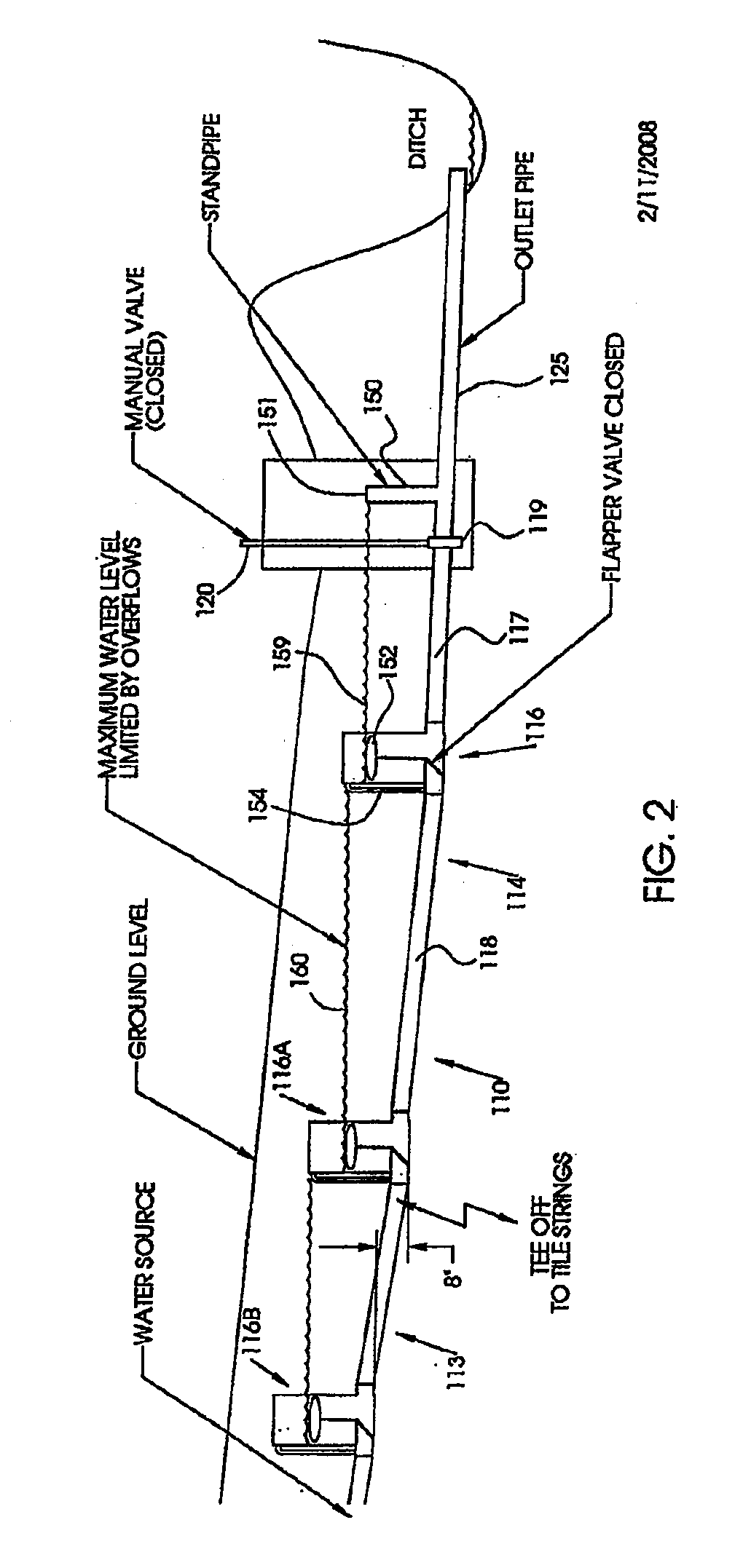Method and apparatus for controlling drainage and irrigation of fields
a technology for irrigation and drainage, applied in mechanical equipment, transportation and packaging, service pipe systems, etc., can solve the problems of high elevations being depleted of water, affecting the drainage effect of irrigation water, and causing the land at higher elevations to be dry sooner
- Summary
- Abstract
- Description
- Claims
- Application Information
AI Technical Summary
Benefits of technology
Problems solved by technology
Method used
Image
Examples
Embodiment Construction
[0021]Referring first to FIG. 1, reference numeral 10 generally designates a single line for conducting subterranean water from a higher elevation (to the left in FIG. 1), to a lower elevation proceeding toward the right, and ending in discharging the water into a drainage ditch generally designated 11, or other suitable discharge waterway.
[0022]The overall system typically will include a method of controlling drainage / irrigation of a field comprising a network of interconnected drainage lines, which typically may include a main line and a number of lateral or auxiliary lines (“laterals”), extending from a higher elevation to a lower elevation and connecting together to form a network exiting through a manually controlled main valve to a drainage ditch or other water passage. The drawings show idealized installations. For example, the drain lines need not be parallel to the surface, nor is the depth of the lines critical. Maintaining good drainage, however, is desirable.
[0023]The la...
PUM
 Login to View More
Login to View More Abstract
Description
Claims
Application Information
 Login to View More
Login to View More - R&D
- Intellectual Property
- Life Sciences
- Materials
- Tech Scout
- Unparalleled Data Quality
- Higher Quality Content
- 60% Fewer Hallucinations
Browse by: Latest US Patents, China's latest patents, Technical Efficacy Thesaurus, Application Domain, Technology Topic, Popular Technical Reports.
© 2025 PatSnap. All rights reserved.Legal|Privacy policy|Modern Slavery Act Transparency Statement|Sitemap|About US| Contact US: help@patsnap.com



